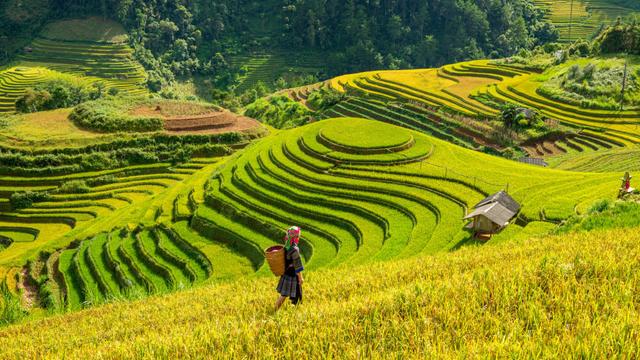Tags
Startup’s tricks drop methane emissions from rice cultivation by 35%
Alternate wetting and drying can help reduce emissions and save water in rice cultivation.

Age old methods of rice cultivation can be modified slightly to reduce emissions from cultivation.
ASingapore-based startup is helping Southeast Asian farmers reduce methane emissions from rice cultivation. The crop that feeds nearly half of the world’s population has a large carbon footprint. The startup has a few tricks that it is sharing with small farmers in Southeast Asia, which are helping them cut emissions by as much as 35 percent.
As the world looks for more eco-friendly ways of sustaining itself, livestock farming has been under the spotlight for its high emissions. While researchers work on reducing these emissions, Singapore-based Rize is training its eye on rice cultivation, the second-highest emitter of greenhouse gases after livestock farms.
Like livestock farms, rice cultivation also generates high amounts of methane, which traps 80 times more heat than carbon dioxide in the atmosphere. Targeting methane emissions, therefore, can deliver massive benefits in the short run.
Reducing methane emissions from rice
To grow rice, farmers flood their fields with water to prevent pest attacks and the growth of weeds that deplete the soil of nutrients. However, this creates conditions where anaerobic organisms, those that can thrive in the absence of oxygen, flourish, and in the process, methane is released.
While this approach has been practiced for ages, the issue has compounded since rice production is at an all-time high. Estimates suggest that more than 3.5 billion people meet their daily calorie requirement by eating rice, and the demand for rice is on the rise. In certain countries, rice cultivation is also a major contributor to the economy, so stopping it is not an option.
So, startups like Rize are looking for ways to reduce crop emissions and have found a low-tech solution.

Alternate wetting and drying
Studies have shown that alternately wetting and drying (AWD) can help reduce methane emissions by as much as 50 percent instead of flooding the fields. In this approach, the field is wetted first, but instead of adding more water to keep it flooded, it is allowed to dry completely first.
Experts told EuroNews that when the field is dry, the roots of the rice plant grow more in search of water. When water is available again, the plant grows more, improving the yield. The method also facilitates farming rice with less water, making it more sustainable.
Rize works with farmers in Southeast Asia and educates them on how these techniques can help them while also supporting them financially to install water pipes and other infrastructure to implement them. In return, the startup collects region-specific data on what approaches are working for the farmers and how the interventions impact plant growth and yield.
https://interestingengineering.com/innovation/reducing-methane-emissions-ricePublished Date: July 15, 2024






